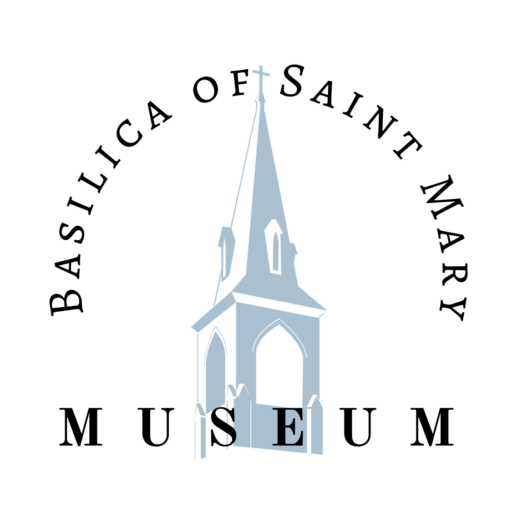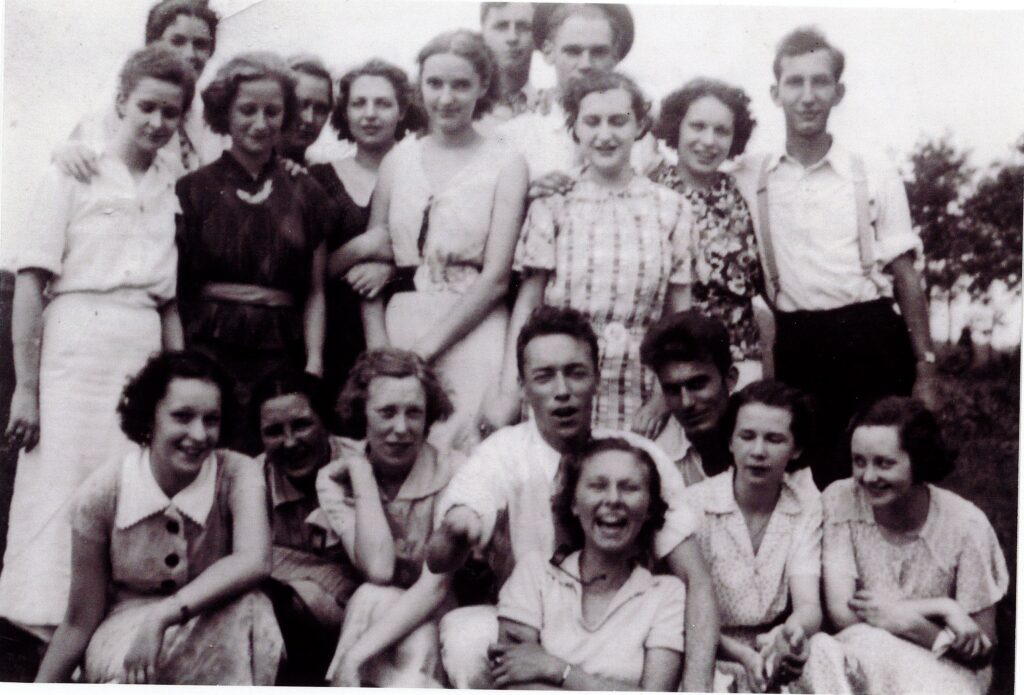Faith Life at Saint Mary
Discover More:
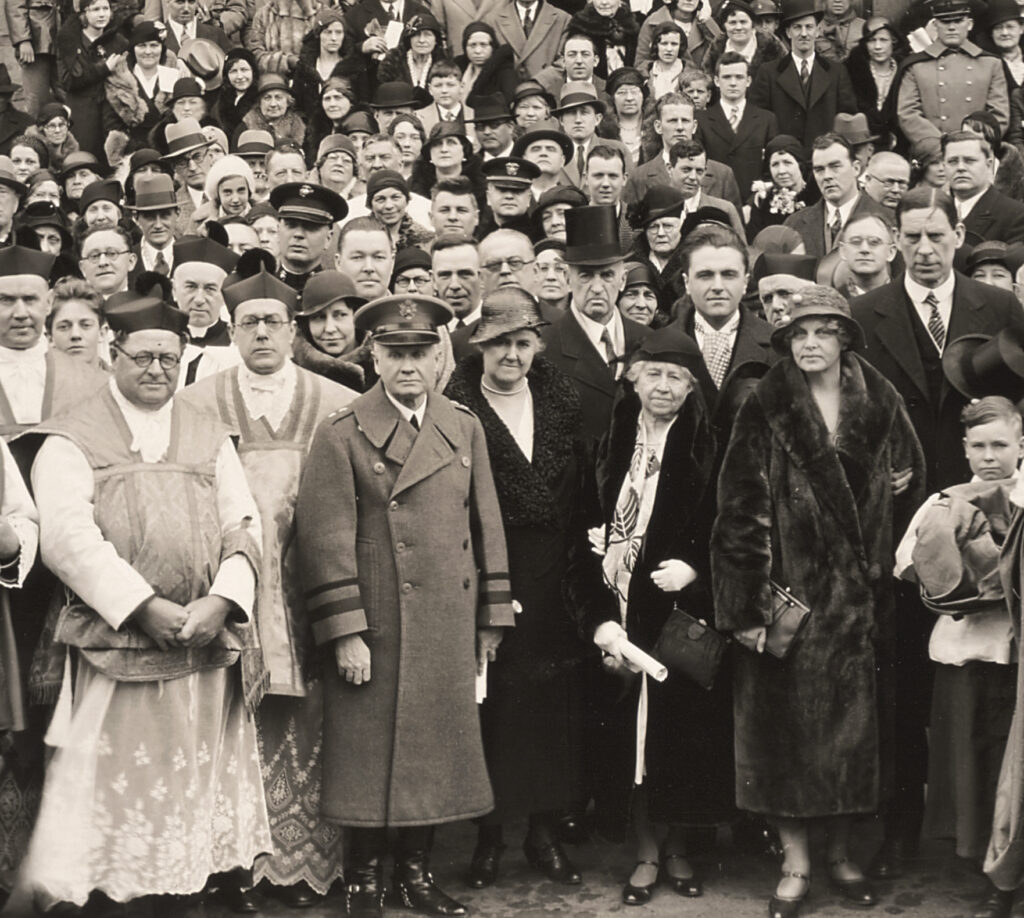

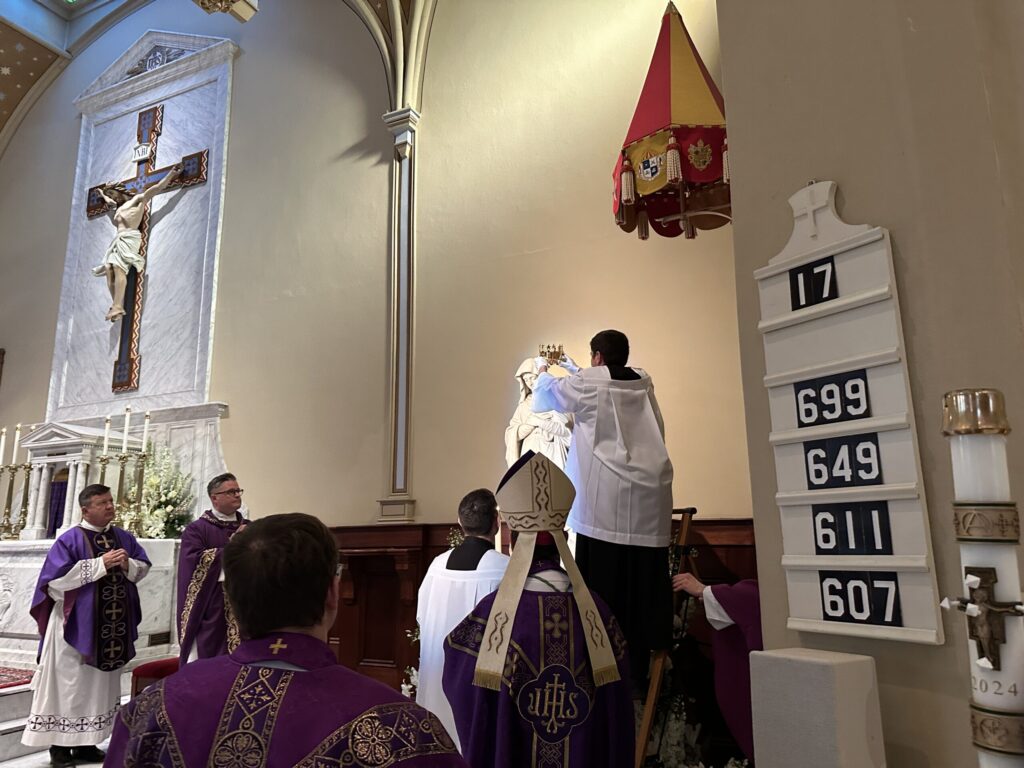

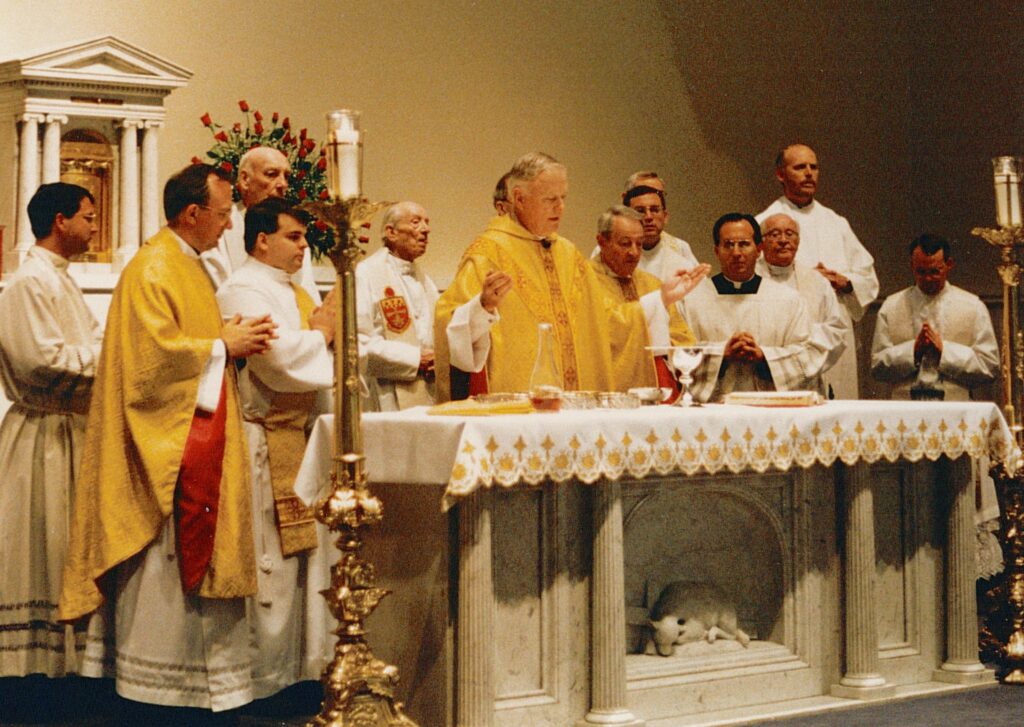
George Washington’s Birthday Bicentennial Mass
On February 21, 1932, Saint Mary parish celebrated a solemn high Mass of Thanksgiving for George Washington’s Birthday Bicentennial. The parish wanted to celebrate the first President and his connection to the founding of the Saint Mary. The Reverend Richard Blackburn Washington, a collateral descendant of George Washington, was a celebrant and preacher at the Mass. The Mass was also attended by Bishop Andrew Brennan of Richmond, the papal delegate Most Reverend Pietro Fumasoni-Bondi, Bishop John McNamara of Washington DC, the French Ambassador Claudel, State Treasurer John Purcell, and representatives of the U.S. military. Thirty priests also participated, and Marines formed an honor guard. The church was decorated with American flags, the French and Papal flags, and Washington’s colors, the blue and buff. A banquet was held at the George Mason Hotel for the visiting priests and dignitaries. The Catholic Students Mission Crusade held a dinner in the Lyceum for the Marines. According to the Baltimore Catholic, the Mass was “one of the most colorful celebrations ever staged in historic St. Mary Church.”
Centennial Mass
On June 16, 1895, the Centennial renovations were complete, and the doors of the church were opened for the 11 o’clock Mass. Father Henry Cutler, pastor of Saint Mary, and Fathers Kenefick and Chester celebrated Mass, with Bishop Van De Vyver of the Diocese of Richmond preaching. The morning Mass had the choirs of Saint Mary and Saint Patrick in Washington DC singing La Hache’s Mass. Parishioners obtained tickets in advance to secure a seat for Mass. The Mayor of Alexandria Henry Strauss, various members of the City Council, and other municipal authorities were seated in front of the sanctuary. The bishop preached on the importance of being true to one’s church and country, and to be a good Catholic is to be a good citizen. That evening Father Richard L. Carne conducted vespers, and Saint Mary and Saint Peter’s choirs sang Le Jeal’s Grand Vespers. The Alexandria Gazette reported the vespers were “the most melodious of all Catholic evening services.”
Bicentennial Mass
On October 5, 1995, Saint Mary Church offered a Mass celebrating the parish’s 200th anniversary. Bishop John Keating of the Arlington diocese was the main celebrant, and Cardinal William Keeler, Archbishop of Baltimore, presided. Other priests who attended and concelebrated included Father Stanley Krempa, pastor of Saint Mary from 1991-1999, Monsignor Frank Hendrick, pastor from 1981-1991, Father Gerald Swift, who served at Saint Mary’s in the 1940s, Father Joseph Schwartz, parochial vicar in the 1950s, and many other former Saint Mary priests. Bishop Keating recognized Saint Mary’s oldest parishioner 102-year-old Miss Lena Moore, and Mrs. Naomi Theresa Thomas, who was a parishioner in the early 1900s and was one of the first parishioners of Saint Joseph Church in 1914. The Mass was so well attended that additional seating and tents were put outside the church on Royal Street. Father Krempa remarked, “Clearly, after 200 years, Saint Mary’s energy is not spent but ready for the next century.”
Episcopal Coronation of the Immaculate Conception
On December 8, 2024, Bishop Michael F. Burbidge crowned the statue of the Blessed Virgin Mary at the Basilica of Saint Mary in an Episcopal Coronation ceremony. The statue, which was donated by anonymous parishioners in 1895, is believed to be the oldest, continuously venerated image of Mary in the Diocese of Arlington.
In both the East and the West, the practice of depicting the Blessed Virgin Mary wearing a regal crown came into use in the era of the Council of Ephesus (AD 431). It is especially from the end of the 16th century that in the West the practice became widespread for the faithful, both religious and laity, to crown images of the Blessed Virgin. The popes not only endorsed this devout custom but “on many occasions, either personally or through bishop-delegates, carried out the coronation of Marian images” (Pius XII, Ad Caeli Reginam). The growth of the custom led to the composition of a special rite for crowning images of Mary, and in the 19th century this was incorporated into the Roman liturgy.
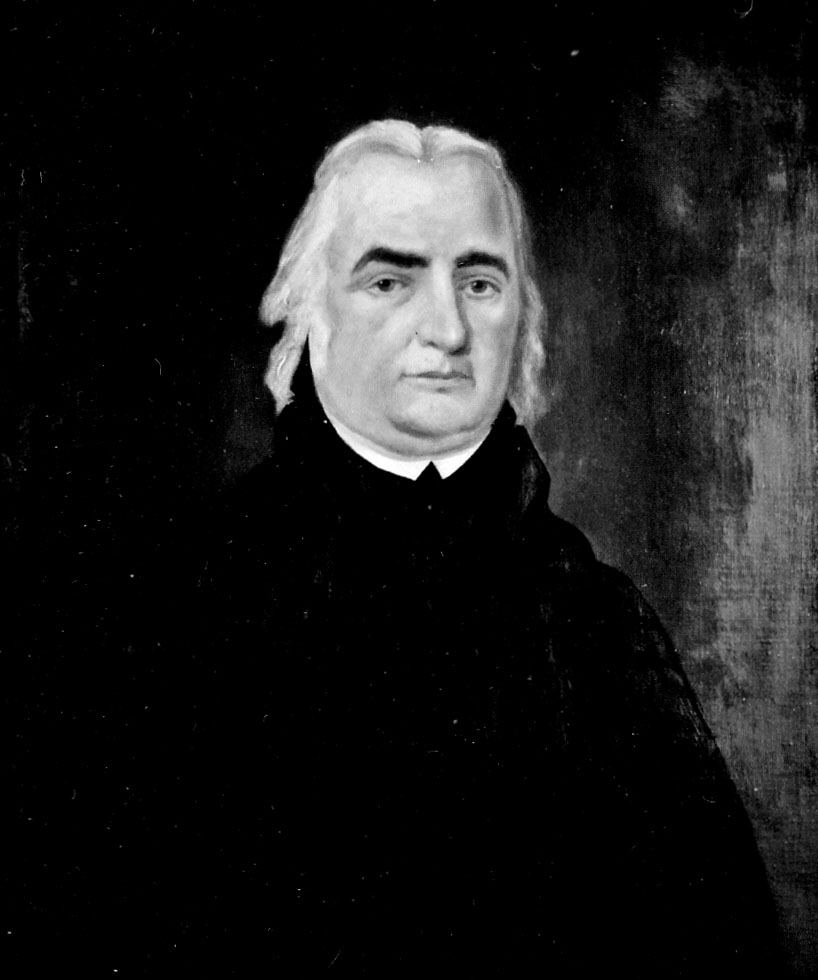
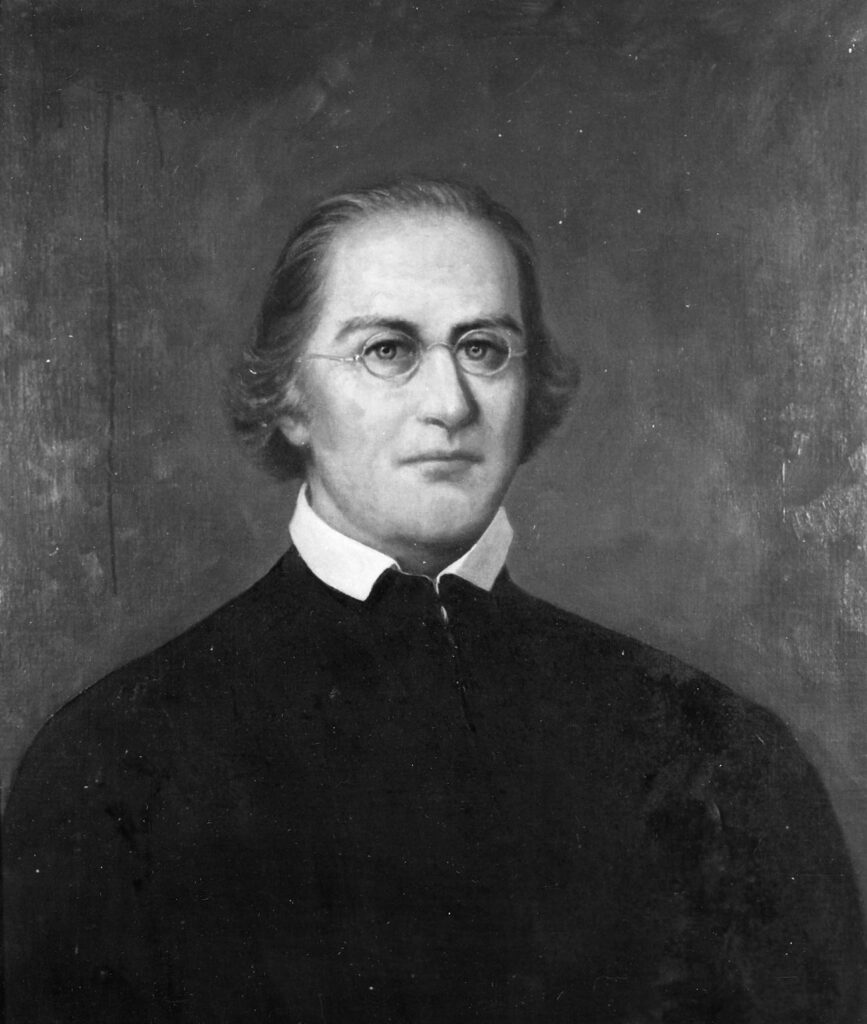
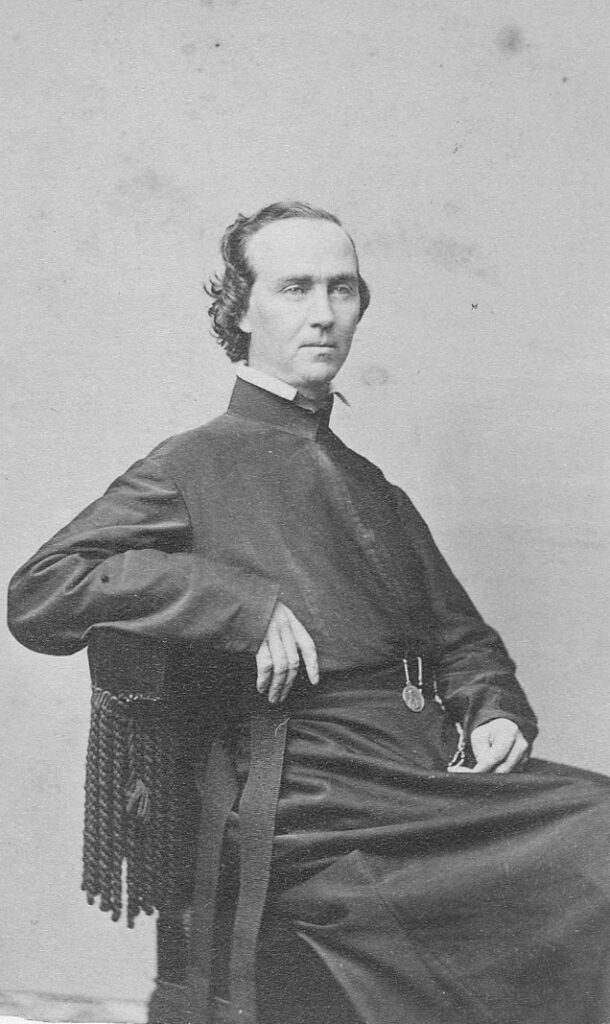
(The following paragraphs are excerpted from the parish history book, Brick Chapel to Basilica: A History of Virginia’s Oldest Catholic Parish):
Father Anthony Kohlman, S.J. (1808), was an Alsatian who had escaped from the French Revolution. He lived in New York for a time and while there helped to build the first Saint Patrick Cathedral. He garnered much attention in New York newspapers at one point when he refused to reveal the name of a person who had stolen property: the thief had confessed and returned the property, and Father Kohlman kept the seal of the confessional. He was eventually sent to Georgetown by Pope Leo XII to teach dogma, and while there helped to serve at Saint Mary as well. After a number of years in the United States, Father Kohlman returned to Europe and taught theology at the Gregorian College in Rome. Among his students was the future Pope Leo XIII.
Father Enoch Fenwick, S.J. (1810), was from a prominent Maryland family. He was instrumental in building the cathedral in Baltimore and his brother, Benedict Joseph Fenwick, became bishop of Boston. Father Fenwick also served as president of Georgetown College, a position he did not want. According to contemporary testimony, he allowed the prefect of studies, Roger Baxter, to run the college. As a deacon, Baxter served at Saint Mary and later returned as pastor after his ordination.
Father Giovanni Antonio Grassi, S.J. (1811), was an outstanding scholar and scientist. Before coming to America, the Italian Jesuit had been rector of a college in Russian Poland and had studied mathematics, astronomy and English. He, too, served as president of Georgetown College. During his tenure, Father Grassi increased and broadened the college’s enrollment, bringing poor Irish students to the school along with the sons of rich planters and Washington politicians.
Father Stephen Dubuisson, S.J. (1837-1841), was a native of Santo Domingo, Hispaniola. He had an early military career, and was a talented musician with a rich tenor voice; at one time he was a member of the court of Napoleon I. When Napoleon attacked the Papal States, Dubuisson resigned his commission, came to the United States and entered the Society of Jesus.
Father John Aiken, S.J. (1846-1850), was a native of Jonesboro, Tennessee. He became a Catholic, joined the Jesuits in 1837, and was ordained by Archbishop Samuel Eccleston, S.S. His family initially disapproved of his decision to embrace “papal idolatry,” but his faith must have been contagious: Father Aiken had the great and unusual privilege of assisting the conversion of his entire family to Catholicism.
Father James Curley, S.J. (1837), was an Irishman who had emigrated from County Roscommon in 1817. He taught natural philosophy and mathematics at Georgetown – subjects he had taught himself as a child in Ireland. An astronomer, he built Georgetown’s observatory and he served on the college faculty for almost 60 years.
Father Anthony Rey, S.J. (1841), was a native of Switzerland. During the Mexican War, President James K. Polk requested chaplains for the U.S. troops, one-third of whom were Catholics, and Father Rey was one of the faculty members at Georgetown who volunteered. He won praise for ministering to the troops at the Battle of Monterey (1846). Tragically, while on his way to visit Father John McElory, the other Georgetown chaplain, he was accosted and killed by bandits.
Father Francis Dzierozynski, S.J. (1842), was an outstanding scholar from Poland who had previously taught French, physics, philosophy, mathematics and music in Saint Petersburg, Russia, and in Belarus. In 1820, the Jesuits were expelled from Russia. After escaping by dogsled to Stockholm, Sweden, he was preparing to teach in the emperor’s court in China. When the offer was rescinded, he went to Rome. The Jesuit order then sent Father Dzierozynski to the United States to be the superior general’s representative; he also taught philosophy at Georgetown.
Father John P. Donelan (1846, 1856), a young Irish priest, was named by Archbishop Eccleston to be the founding pastor of a new church, just a few blocks away from the White House. He founded the church of Saint Matthew, which began as a poor, mostly Irish immigrant church and years later became the Archdiocese of Washington’s cathedral.
Father James Clark, S.J. (1848), graduated from the U.S. Military Academy at West Point and was an engineer and mathematician. A convert to Catholicism, he entered the Jesuits in 1844. Father Clark served as president of Holy Cross College in Massachusetts and was one of the founders of Gonzaga College High School in Washington, DC. He taught mathematics and chemistry at Georgetown and served as vice-president and treasurer of the college.
Father Joseph P. O’Hagan, S.J. (1862), served as a chaplain with the Union Army of the Potomac during the Civil War. More than 1,500 soldiers, mostly from Irish Catholic New York regiments, attended Sunday Mass on the battlefields. After the war, Father O’Hagan returned to Georgetown to teach. He later became president of Holy Cross College.
